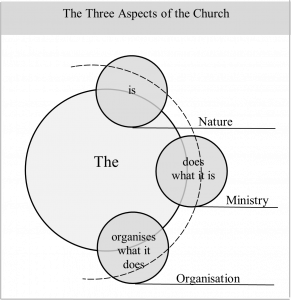A Proposal for a Church Health Framework
by Certified Church Consultant, Soon-Hock Lim
I have been studying church health for some time now. The question that has guided me in my study has been, “What are the necessary prerequisites to understand church health and to study the health of churches?” I believe we must have a cohesive church health framework that is based on a biblical and theological foundation. A cohesive framework is helpful and necessary because it gives clarity about the structure of the model. It shows how the parts relate with one another and with the whole model. It also enables evaluation; whether each part is consistent with the whole, and whether the whole model serves its intended purpose—in this case, as a church health model.
I have discovered that most of the church health models do not have a cohesive framework. Even those that do, many are not based on an explicit biblical and theological foundation. Two models that do are Chuck Lawless’ Know Your Church[1] and Leadership Transformation, Inc.’s Church Health Assessment Tool (CHAT).[2]
 The Three Aspects of the Church
The Three Aspects of the Church
I would like to propose another framework that understands the church (as in a local church or congregation) in terms of its nature, ministry, and organisation. I first came across the study of the church along these three aspects from Craig Van Gelder’s The Essence of the Church.[3] The nature of the church refers to what the church is—its essence, attributes, and characteristics. The ministry of the church refers to what the church does—its purpose, functions, activities, and roles. And the organisation of the church refers to how the church organises itself—which includes its structures, processes, and leadership.
The diagram[4] on the left, The Three Aspects of the Church, presents a visual of the three aspects and their interconnectedness. The ministry of the church is not just about what the church does or its functions, but that it does what it is. In other words, the ministry of the church must be consistent with and flow from its nature. In the process of developing a church health framework, two questions need to be asked: (1) what is the biblical nature of the church, and (2) what ministry functions arise from the nature of the church?
Similarly, the organisation of the church is not just about the efficient or even effective organisation of the church as an organisation or an institution. The purpose for the good organisation of the church must be to serve and support the ministry of the church. If a health analysis is carried out on a church and the results show that the organisation of the church is strong while its ministry is weak, it is questionable if the organisation of the church is serving the biblical purpose of the church. It is likely that the focus of the well-oiled machinery of the church (and including its finances) is misplaced on some non-essentials rather than the ministry of the church.
[1] Know Your Church is based on Chuck Lawless’ Discipled Warriors: Growing Health Churches that are Equipped for Spiritual Warfare (Grand Rapids, MI: Kregel Publications, 2002).
[2] CHAT is based on Stephen A. Macchia’s Becoming a Health Church: 10 Characteristics (Grand Rapids, MI: Baker Books, 1994). See CHAT’s “A Guide to Church Health Assessment.” Leadership Transformation, Inc., https://www.healthychurch.net/CTI/PDF/Guide_to_Church_Assessment.pdf (accessed 3 May 2024) for its biblical and theological basis.
[3] Craig Van Gelder’s The Essence of the Church: A Community Created by the Spirit (Grand Rapids, MI: Baker Books, 2000).
[4] The diagram is adapted from Tim Koster & John Wagenveld, Take Your Church’s Pulse: 10 Vital Signs of a Healthy Church (Sauk Village, IL: Multiplication Network Ministries, 2014), 10.


